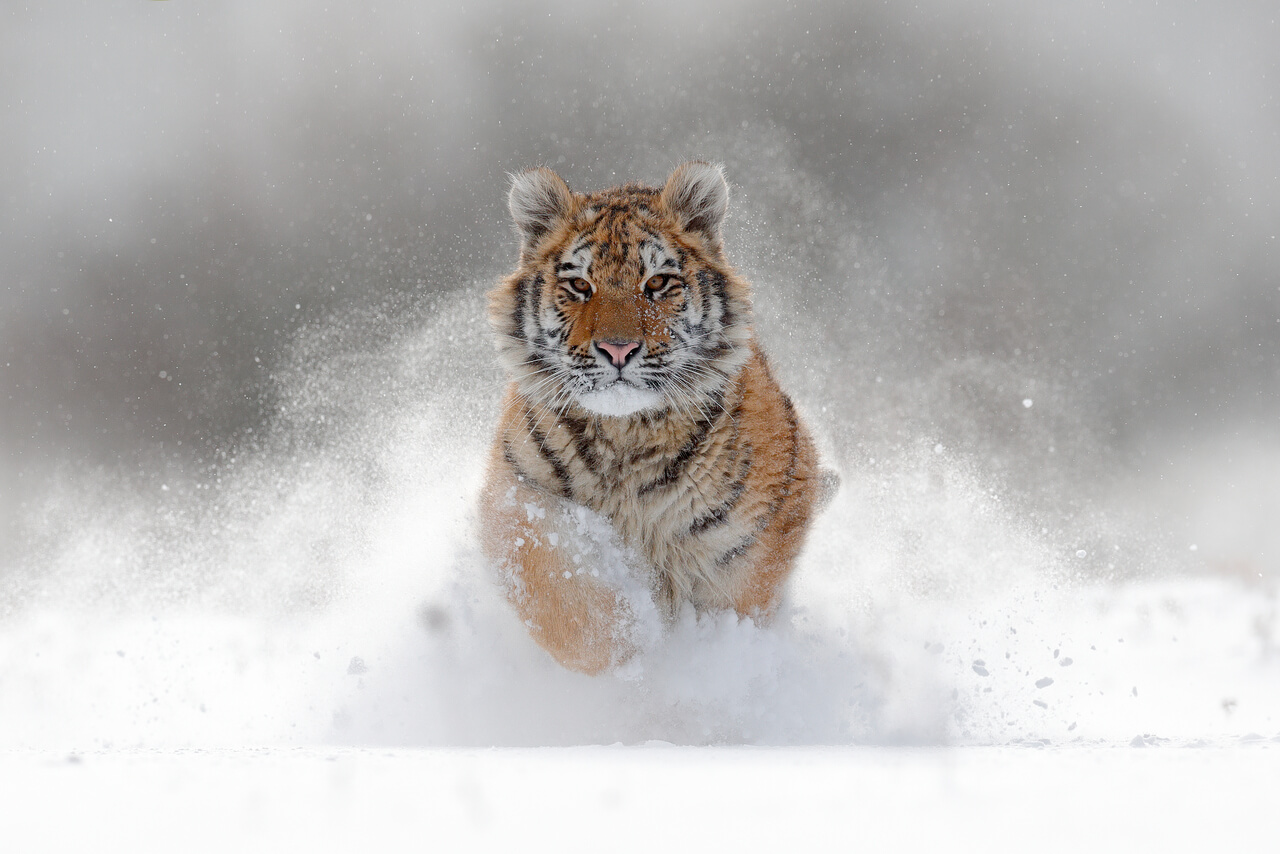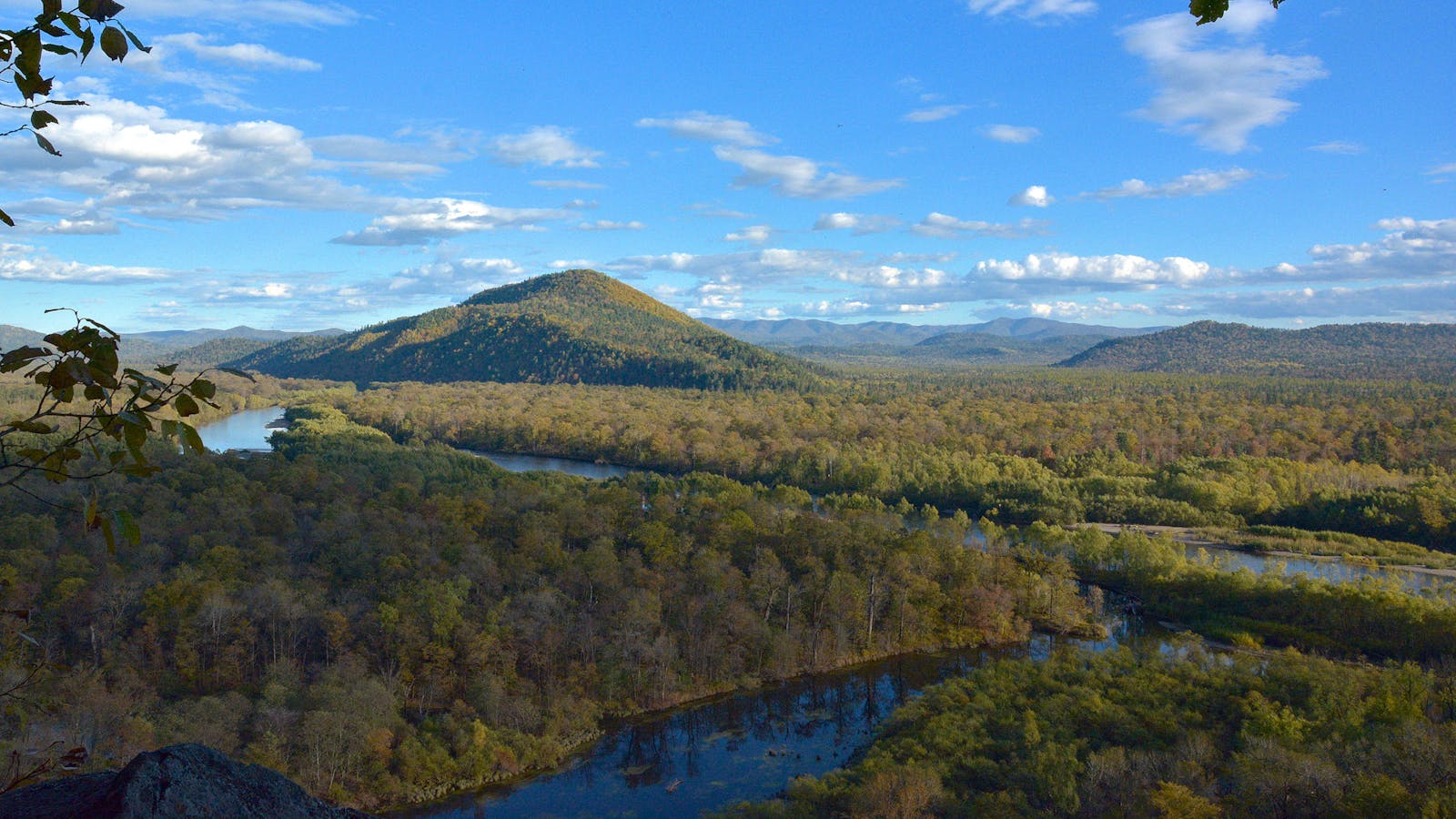Ussuri Broadleaf and Mixed Forests
The ecoregion’s land area is provided in units of 1,000 hectares. The conservation target is the Global Safety Net (GSN1) area for the given ecoregion. The protection level indicates the percentage of the GSN goal that is currently protected on a scale of 0-10. N/A means data is not available at this time.
Bioregion: Manchuria-Ussuri Mixed Forests & Meadow Steppes (PA46)
Realm: Eastern Eurasia
Subrealm: Northeast Asian Forests
Ecoregion Size (1000 ha):
19,791
Ecoregion ID:
685
Conservation Target:
54%
Protection Level:
2
States: Russia
In the ancient Ussuri Broadleaf and Mixed Forests, tigers stalk Manchurian wapiti and long-tailed goral browse steep-sided mountain slopes. The ecoregion is a haven for many rare and endangered bird species including iconic red-crowned cranes, oriental storks, and scaly-sided mergansers.
This “Z” shaped ecoregion is formed by a zone of forest occupying the hills and slopes of several mountain ranges. It is found just north of the Amur River, which swings northwards through the ecoregion, east of the Ussuri River on the gentle western slopes of the Sikhote-Alin Mountains, and the steep eastern slopes of the Sikhote-Alin to the coast of the Sea of Japan.

The Siberian tiger or Amur tiger (Panthera tigris altaica) is the flagship species of the Ussuri Broadleaf and Mixed Forests ecoregion. Image credit: © Ondrej Prosický I Dreamstime
In winter, the Sikhote-Alin range blocks the cold Siberian air from reaching the coast, causing a temperature increase of 10°C between the interior and the coast. In summer, the mountains prevent warm interior air masses from reaching the cooler coast. On the coast, the average annual temperature is 5.7°C, average monthly temperatures are between -10.2–20.6°C, and average annual precipitation of 813 mm per year, peaking in August. Inland, the average temperature is 0.6°C, with monthly averages between -24.1–21.4°C and average precipitation of 640 mm.
The area was not glaciated during the Pleistocene or Holocene; hence a long period of uninterrupted vegetation development, along with the climate and location, has resulted in the mixing of northern and southern, maritime and steppe elements in the vegetation. The upshot is a remarkable forest of co-dominant tree species and high species richness. These forests form lower and middle vegetation belts from sea level to 800–900 m (in the south as high as 1,200 m).
Korean pine, Korean birch, Amur lime, Manchurian linden, Manchurian ash, Korean ash, Manchurian walnut, Mongolian oak, Japanese elm, castor aralia, Manchurian fir, and Amur cork tree all vie for space in the canopy. A complex 2-story underlayer contains numerous more shade-tolerant tree species. Endemism is high, with over 100 plant species recorded, including Aconitum desoulavyi, Carex mandshurica, Dimeria neglecta, Kitagawia eryngiifolia, Polystichum subtripteron, Sanguisorba magnifica, and Saussurea splendida.
This is the last stronghold of the endangered Amur tiger. An estimated 360 individuals exist, with an ambitious target to increase the number to 600 by 2022. Manchurian wapiti and wild boar are their preferred prey species, with some sika deer, Siberian musk deer, and Siberian roe deer. A huge variety of other animals rely on the forest. Mammals include the vulnerable long-tailed goral, Asiatic black bear, raccoon dog, leopard cat, and Manchurian hare.
The ecoregion is also vital for endangered birds, including the Oriental stork and Blakiston’s fish owl. Forest streams provide most of the remaining breeding habitat for the endangered scaly-sided merganser. Wetlands in the north of the ecoregion host endangered red-crowned cranes.
Because of historical exploitation, much of the northern part of the ecoregion is now devoid of trees, particularly in the vicinity of the Amur River. In the southern part, frequent urban developments, roads, and agricultural crops are growing along the river valleys. In 2002 comparison of officially recorded harvesting with export figures revealed that about 70% of the timber in the Primorye region was harvested illegally. Russian authorities are working to control forest exploitation by introducing wood certification. The Central Sikhote-Alin UNESCO World Heritage Site was expanded in 2018, and a new protected area, Zov Tigra, was created in 2008.
The risk of wildfires is increasing, poaching continues to be an issue, and the conversion of forest to farmland is destroying habitat. Illegal logging has continued apace, particularly Mongolian oak. Recently, the transfer of African swine fever from domestic pigs to wild boar poses a threat to one of the tiger’s main prey species.
Priority conservation actions for the next decade:
- Prevent poaching of tiger and prey species.
- Prevent illegal logging
- Increase connectivity between protected areas.
-
-
1. Joint Research Centre of the European Commission. 2019. The Digital Observatory for Protected Areas (DOPA) Explorer 4: Ussuri broadleaf and mixed forests. [Online]. [Accessed 20th November 2019]. Available from: https://dopa-explorer.jrc.ec.europa.eu/ecoregion/80443
2. Krestov. P.V. 2003. Forest Vegetation of Easternmost Russia (Russian Far East). In: Kolbek, J., Srutek, M., Box, E.E.O. eds. Forest Vegetation of Northeast Asia. Dordrecht: Springer. pp. 93-180.
3. Global Tiger Initiative Secretariat. 2011. Global Tiger Recovery Program, 2010- 2022. Washington DC: The World Bank. [Online]. [Accessed 20 November 2019]. Available from: https://amurinfocenter.org/en/docs/documents/global-tiger-recovery-program-2010-2022/ -
Cite this page: Ussuri Broadleaf and Mixed Forests. Ecoregion Snapshots: Descriptive Abstracts of the Terrestrial Ecoregions of the World, 2021. Developed by One Earth and RESOLVE. https://www.oneearth.org/ecoregions/ussuri-broadleaf-and-mixed-forests/
-

.png?auto=compress%2Cformat&w=300)

